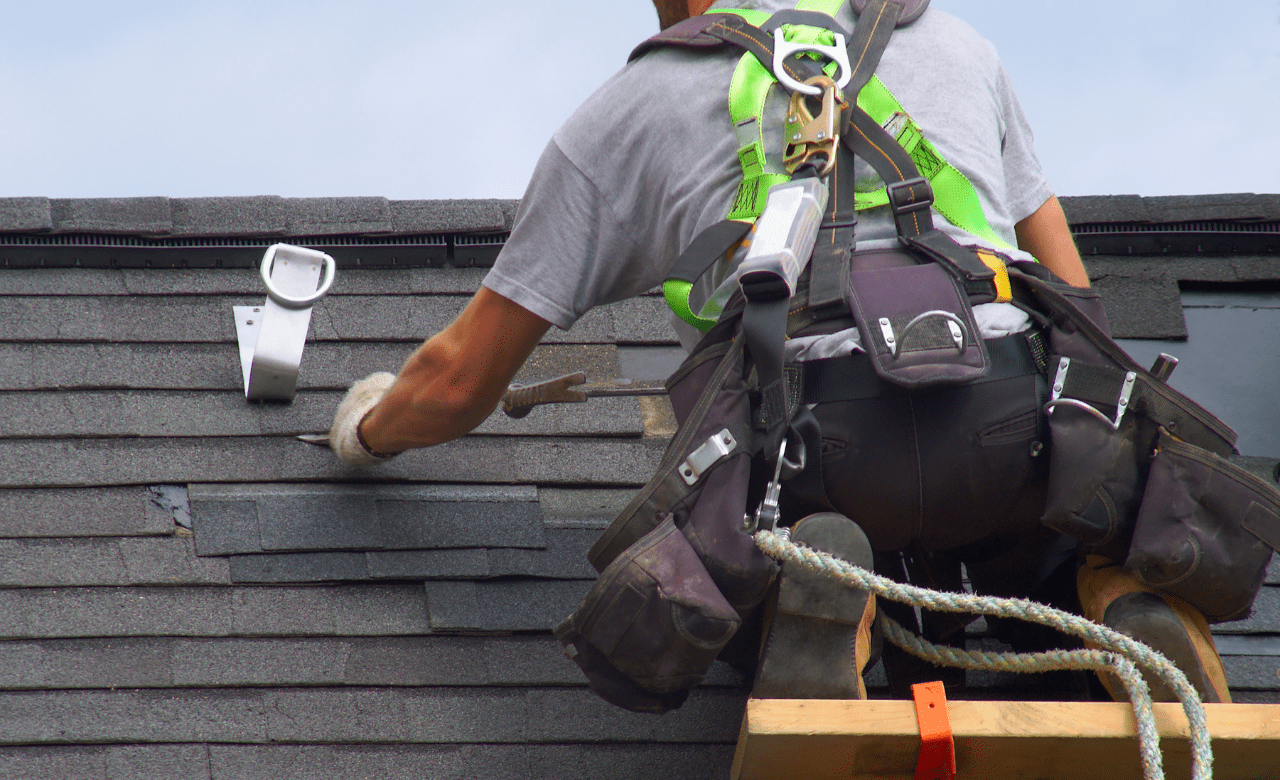Storms can wreak havoc on roofs, causing damage that ranges from minor leaks to significant structural issues. Knowing when to repair or replace your roof after storm damage is crucial for maintaining the integrity and longevity of your home’s roofing system. In this blog, we’ll discuss the signs that indicate repair or replacement is necessary, the importance of storm damage restoration, and the role of roof flashing in preserving your roof’s integrity.
Signs That Your Roof Needs Repair or Replacement
Shingle Damage
– Repair: Missing or damaged shingles can be replaced individually if the damage is isolated.
– Replacement: Extensive shingle damage, such as widespread curling, cracking, or granule loss, may necessitate roof replacement.
Leaks and Water Damage
– Repair: Small leaks or water spots can often be patched and repaired to prevent further water infiltration.
– Replacement: Extensive water damage, including sagging ceilings or significant interior leaks, may require roof replacement to address underlying structural issues.
Roof Flashing Issues
– Repair: Damaged or deteriorated roof flashing can be repaired or replaced to prevent water intrusion at vulnerable areas, such as chimneys, vents, and skylights.
– Replacement: If roof flashing is extensively damaged or improperly installed, replacement may be necessary to ensure effective water protection.
Structural Damage
– Repair: Minor structural damage, such as localized sagging or roof deck issues, can often be repaired without replacing the entire roof.
– Replacement: Severe structural damage, such as widespread rot or compromised roof framing, may require roof replacement to address safety and stability concerns.
Age of the Roof
– Repair: Newer roofs with minor storm damage or isolated issues may only require repairs to restore functionality.
– Replacement: Older roofs nearing the end of their lifespan may benefit from full replacement to enhance durability and longevity.
Importance of Storm Damage Restoration
Preventing Further Damage
– Prompt storm damage restoration helps prevent further damage to your roof and interior spaces, minimizing the risk of costly repairs in the future.
Maintaining Roof Integrity
– Restoring storm-damaged areas, such as replacing missing shingles or repairing roof flashing, helps maintain the integrity of your roof and prevents water infiltration.
Enhancing Weather Resistance
– Effective storm damage restoration improves your roof’s ability to withstand future storms, reducing the likelihood of recurring damage.
Extending Roof Lifespan
– By addressing storm damage promptly and restoring affected areas, you can extend the lifespan of your roof and maximize its performance over time.
The Role of Roof Flashing in Preserving Roof Integrity
Roof flashing plays a crucial role in preserving roof integrity and preventing water intrusion at vulnerable areas. Here’s how roof flashing contributes to storm damage prevention and restoration:
1.Waterproofing: Roof flashing, such as drip edge flashing, valley flashing, and chimney flashing, provides a waterproof barrier at intersections, edges, and penetrations.
2.Sealing Vulnerable Areas: Flashing seals vulnerable areas where different roof surfaces meet, preventing water from seeping into the roof structure or interior spaces.
3. Preventing Leaks: Properly installed and maintained roof flashing prevents leaks, water stains, and structural damage caused by water infiltration.
4. Enhancing Weather Resistance: Well-maintained roof flashing enhances your roof’s weather resistance, particularly during storms and heavy rainfall.
5. Supporting Storm Damage Restoration: During storm damage restoration, inspecting and repairing roof flashing ensures comprehensive protection and prevents future water-related issues.
Conclusion
In conclusion, knowing when to repair or replace your roof after storm damage is essential for preserving your home’s structural integrity and ensuring long-term roof health. Prompt storm damage restoration, including addressing shingle damage, leaks, roof flashing issues, and structural concerns, is key to preventing further damage and extending your roof’s lifespan. By understanding the signs of storm damage restoration and the importance of timely repairs or replacements, you can safeguard your home against the impacts of severe weather and maintain a durable, weather-resistant roofing system for years to come.

As the editor of the blog, She curate insightful content that sparks curiosity and fosters learning. With a passion for storytelling and a keen eye for detail, she strive to bring diverse perspectives and engaging narratives to readers, ensuring every piece informs, inspires, and enriches.










